STRUCTURAL SYMBOL
फ्रेंड्स आज के इस लेख में हम structural symbols के बारे में जानेंगे पाइप fitter को थोड़ा बहुत structural के बारे में भी मालूम होना चहिए क्यों की जब भी हम पाइपिंग का कार्य करते है तो पाइप को rest करने के लिए सपोर्ट का जरूरत पड़ता है इस लिए थोड़ा structural का भी ज्ञान जरूरी है नीचे में कुछ symbol के बारे में जानते है जो निमन है
Friends, in today’s article, we will learn about structural symbols, pipe fitters should also know a little bit about structural, because whenever we do piping work, support is needed to rest the pipe, so A little structural knowledge is also necessary, below we know about some symbols which are as follows
उपर का जो भी symbol आप देख रहे है वह सभी साइड व्यू side view हैं
इसको हम बारी बारी से बिस्तर में STUDY करेगे
Whatever symbol you are seeing above are all side view side view.
We will study this one by one in bed
(1) ANGLE: –ऐंगल दो प्रकार के होते हैं। इसको ISA भी लिखते है जिसका फुल्फोर्म INDIAN STANDARD ANGLE है
(A) EQUAL ANGLE: -इक्वल ऐंगल जिसका दोनों कॉलर एक बराबर हो जैसे 50 x 50 का ऐंगल
(B) UNEQUAL ANGLE: –अनइक्वल ऐंगल – जिसका एक कॉलर बड़ा तथा दूसरा कॉलर छोटा हो जैसे
ऊपर चित्र 1 में ऐंगल दिखाया गया है। जिसका एक कॉलर नीचे या Far Side में है और इसको डॉटेड लाइन से दर्शाया गया है। चित्र 2 में डॉटेड लाइन के जगह डार्क लाइन बताया गया है। इसका मतलब है कि ऐंगल का एक कॉलर उपर या Near Side में है।
The angle is shown in Figure 1 above. Whose one collar is below or in Far Side and it is shown by dotted line. In Figure 2, the dark line is shown instead of the dotted line. This means that one collar of the angle is on the top or near side.
नोट :- जब हम Far Side करते है तो इसका मतलब होता है ड्राईंग देखने वाले से दूर की तरफ तथा Near Side का मतलब नजदीक की तरफ अर्थात जो दूर जाता है Far side जो नजदीक आता है Near side डॉटेड लाइन – Far side डार्क लाइन- Near side
Note: – When we do Far Side, it means the far side from the drawing viewer and Near Side means the near side, that is, the one who goes away. Far side which comes near. Near side dotted line – Far side dark line. near side
read more-
(2) CHANNEL: –
A की तरफ खड़ा होकर देखेंगे तो चैनल नीचे चित्र की तरह दिखाई देगा। FAR SIDE CHANEL यानी दो कॉलर फार साइड है। या डाउन साइड है।
Standing on the side of A, the channel will appear as shown in the picture below. FAR SIDE CHANEL means two collars are on the far side. Or down side.
B की तरफ खड़ा होकर देखेंगे तो डाटेड लाइन की जगह दोनों डार्क लाइन दिखाई देगा जो दर्शाता है कि कालर नीय साइड है जैसे
Standing on the side of B, instead of the dotted line, both the dark lines will be visible, which shows that the collar is the right side, like –
C की तरफ से देखने पर चैनेल निम्न तरीके से दिखाई देगा
ऊपर का चित्र 1 तथा 2 दोनों समान है । Plan देखने से स्पष्ट नही होगा कि 1 ऐंगल है तथा कौन सा चैनेल है। जब Section – A या Section – B देखें फर्क नजर आयेगा।
Above picture 1 and 2 both are same. It will not be clear from seeing the plan that there is 1 angle and which channel. When you see Section – A or Section – B, you will see the difference.
Shape: C channel has a shape that resembles the letter “C” and has a symmetrical profile.
Cross-section: It has a flat horizontal base with two perpendicular vertical sides.
Applications: C channels are widely used in construction and engineering applications. They provide structural support and are often used as beams, purlins, and support frames in buildings, bridges, and other structures.
Materials: C channels can be made from various materials, including steel, aluminum, and other metals.
ISMC (Indian Standard Medium Weight Channel):
Definition: ISMC is a standardized steel channel section recognized as per the Indian Standards (IS) code.
Sizes and Dimensions: ISMC channels are available in various sizes and dimensions, designated by their weight per meter. Common sizes range from ISMC 75 to ISMC 400, indicating different weights.
Designation: The ISMC designation consists of the letters “ISMC” followed by the weight per meter in kilograms. For example, ISMC 100 refers to an Indian Standard Medium Weight Channel weighing 100 kg per meter.
Properties: ISMC channels have specific properties such as moment of inertia, section modulus, and weight that determine their structural strength and load-bearing capacity.
Applications: ISMC channels are extensively used in structural applications, such as building frames, support beams, columns, and other load-bearing structures.
(3) H BEAM: –
नोट – जिस बीम का Flange तथा Web दोनों एक समान (बराबर) होता है उसे H Beam कहते हैं। और जिसका WEB बड़ा तथा Flange छोटा रहता है उसे आई बीम कहते हैं ।
Note – The beam whose flange and web both are same (equal) is called H beam. And whose WEB is large and flange is small, it is called I beam.

Aऔर B की side से देखने पर आपको कुछ इस प्रकार दिखाई देगा जो उपर के चित्र में दिखाया गया है ।
Looking from the side of A and B, you will see something like this shown in the picture above.
उपर के चित्र 1 तथा 2 दोनों एक जैसा दिखाई पड़ता है। लेकिन 1 बीम है तथा दूसरा चैनल है। जब Section A तथा B देखेंगे तो फर्क नजर आयेगा ।
Both pictures 1 and 2 above look the same. But 1 is beam and the other is channel. When you see Section A and B, you will see the difference.
नोट :- Structure Drawing में जब तक Section नही देखा जाय तबतक ऐंगल, चैनल, बीम इत्यादि का फर्क नही नहीं जन सकते ।
निष्कर्ष –
दोस्तों आज के इस लेख में आपने जाना कीstructural drawing. में दिए गये चैनल बीम और एंगल को कैसे पहचानेगे
अगर यह लेख आपको अच्छा लगा तो सोशल मेडिया साईट पे अपने दोस्तों के साथ शेर करे ताकि उनको भी इसका लाभ मिल सके ।
conclusion –
Friends, in today’s article you have learned about structural drawing. How to identify the channel beam and angle given in
If you like this article, then share it with your friends on social media sites so that they too can get benefit from it.
Post Views: 535
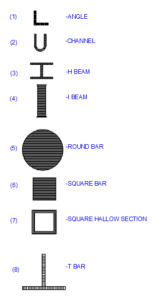
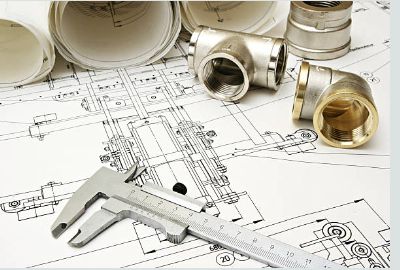


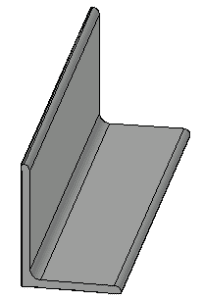





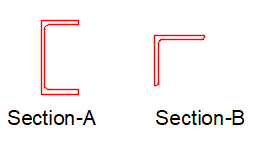
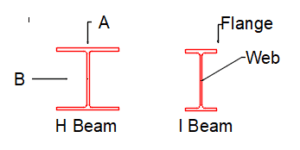




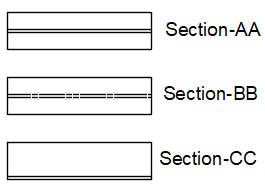
So nice